Doing research for the Magnolia Cemetery tour for the last three years has taught me a few things. For starters, it’s taught me that you never know what you’ll find when you start researching the past. Some stories can be poignant, and others, not so much. What skeletons lurk in someone’s history? There could be many or none, so we take the good with the bad here at rediscoveringsetx.com and try to preserve our findings correctly for all to see. I write this because recently, we’ve stumbled on one of the oddest stories to date. I want to give you a little backstory before I go on.
When I first walked the hallowed grounds of Magnolia Cemetery, I noticed a Chinese headstone close to the line of trees near Brakes Bayou. We’ve had it partially translated for our yearly tour, but unfortunately, I haven’t had the time to do a rubbing so that we could get a more complete translation of the inscription. So, this stone still presents a mystery, and we’re not certain who is buried beneath it. When a fellow researcher found an article in the Beaumont Enterprise about a Chinese sailor who drowned in the Neches River, I began wondering if our mystery could soon be solved. As sad as the sailor’s death was, the aftermath was a fascinating oddity that could not easily be explained.
(Note: I have two articles about the Chinese sailor, and both include different spellings of the ship’s name. In the original article, the steamship was named Sapanta. The second article called it Santanta in the heading and Satanta in the body. Since the ship was primarily used in Mexico, I’ll assume all three attempts at naming the vessel were wrong. Furthermore, because all three names seem to be a misspelling of Santana, I’ll be using this name throughout this article. If I discover a clearer document that indicates what the ship’s name was, I’ll update this article accordingly.)
Wong Shu was a Chinese sailor who sailed on the Standard Oil Company tanker Santana. The ship had been docked in Beaumont for some time, on hiatus because of the volatility of the Mexican oil trade. Tragedy struck, and Mr. Shu drowned in the Neches River, just off the Magnolia docks in Beaumont, in the evening on Saturday, August 6, 1921.
Mr. Shu was Cantonese and a Buddhist, as were approximately half of his fellow Chinese crewmates. Knowing this, the crew attempted to hold the traditional funeral rites for Mr. Shu, but a few problems arose. While many of the items needed for the ritual were purchased, such as rice, meat, and bread, organizers were unable to locate a band to provide music at such a late hour. Automobiles were provided to transport mourners to the cemetery, but when they arrived, they were met by a multitude of locals.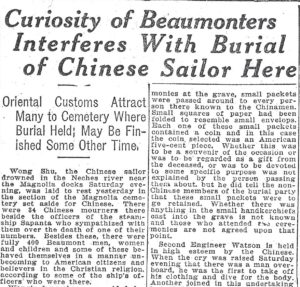
As the first article explains:
. . . there were fully 400 Beaumont men, women and children and some of these behaved themselves in a manner unbecoming to American citizens and believers in the Christian religion, according to some of the ship’s officers who were there.
The thirty-four Chinese mourners and British officers of the Santana who attended were distressed, to say the least. The locals were asked to step back so the mourners could finish the ritual, but the locals ignored the plea. Most of the mourners did not throw their offerings of rice, meat, and bread into the grave, as is custom, due to fear that the locals would take the food away.
Then each Chinaman passed around the grave and cast a handful of dirt on the casket. A titter rippled about the grave and the Chinamen were displeased, but decided to continue with the ceremony. Then each mourner cast into the grave his handkerchief, which had been bought new for the occasion. Again there was a titter and the Chinese mumbled something and expressed a wish to leave the cemetery to return at some other time to complete the ceremony without interruption.
Wong Shu was buried at Magnolia Cemetery, though the exact location of his grave is not known. The newspaper article stated that he was buried in the Chinese part of Magnolia Cemetery, but this is incorrect, as there is no “Chinese part” of the cemetery. Records show he was buried on public ground, but this information is largely unhelpful, as it means he could be buried nearly anywhere.
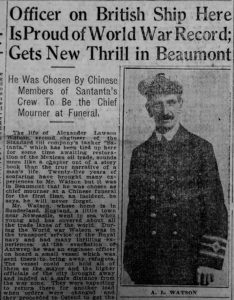 On August 14, another article about Mr. Shu’s death graced the pages of the Beaumont Enterprise. This one featured the “chief mourner,” second engineer Alexander Lawson Watson. He was chosen as chief mourner by the Chinese crew for his selfless actions of diving into the Neches River and attempting to save Wong Shu. Although the first part of the article is mostly an account of Mr. Watson’s war record, Mr. Watson had many things to say about the crew, and about the Chinese in general.
On August 14, another article about Mr. Shu’s death graced the pages of the Beaumont Enterprise. This one featured the “chief mourner,” second engineer Alexander Lawson Watson. He was chosen as chief mourner by the Chinese crew for his selfless actions of diving into the Neches River and attempting to save Wong Shu. Although the first part of the article is mostly an account of Mr. Watson’s war record, Mr. Watson had many things to say about the crew, and about the Chinese in general.
A Chinaman is not coldblooded and heartless, he says. They love, hate and sorrow as much and as genuinely as members of the Caucasian race but they show their love, their hatred and their sorrow in a different way. It is not the belief of the British officers of the Satanta that the people of Beaumont who attended the funeral last Monday of the Chinese sailor to be disrespectful but they failed to take into consideration that the odd things they saw were not intended to provoke levity. Some of those who were there deny anything was done by Beaumonters that was disrespectful of the dead. However, American manners were just as odd to the Chinese as the manners to Americans and on a less sad occasion the Orientals would not have taken offense at what they heard and what was done.
After reading both articles, I got the impression that the Beaumonters’ ignorance of cultural and religious differences was on full display. Yes, you can also say this about the Chinese crew, but you must admit they were surely in a vulnerable state at the time. To lay a loved one to rest is a solemn and poignant moment for family and friends. I think (or hope) most cultures would agree on this.
This wasn’t the first time that Southeast Texans were introduced to Asian culture. During the same period, a few Japanese rice farming families settled in SETX and went on to make a big impact on the industry. Although some residents were initially hesitant to welcome them, they eventually found them to be hospitable neighbors.

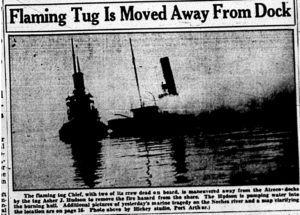
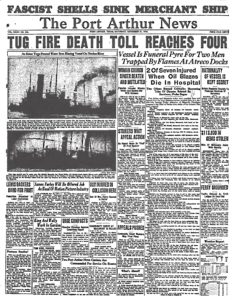
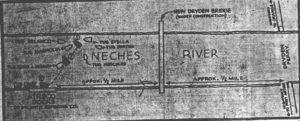
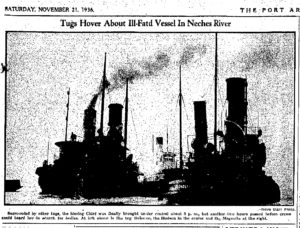
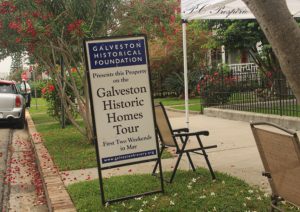
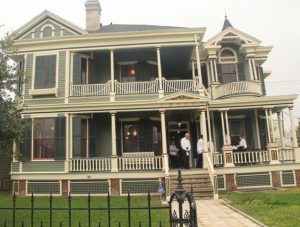
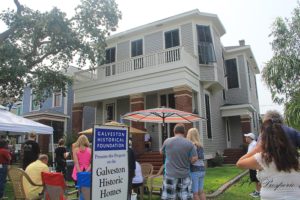
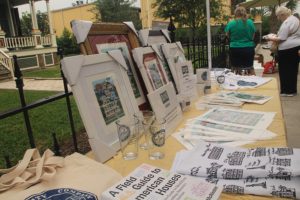
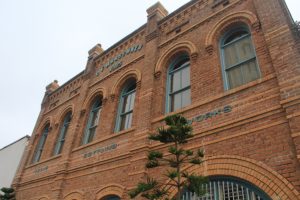
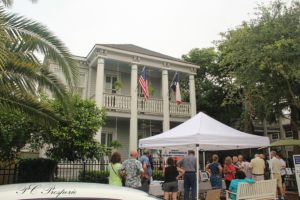
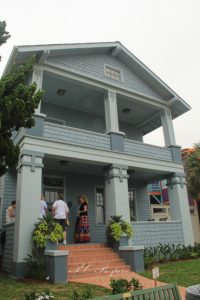
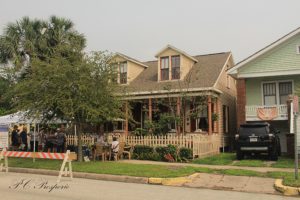

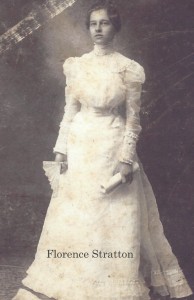
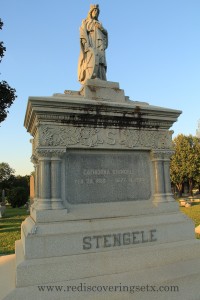
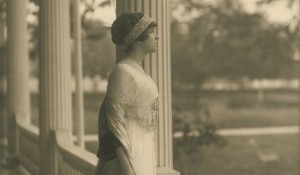

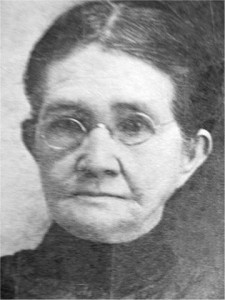
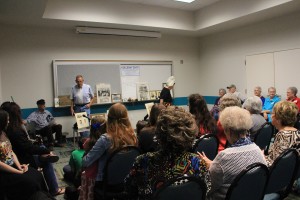
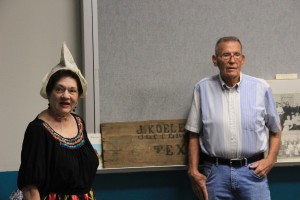
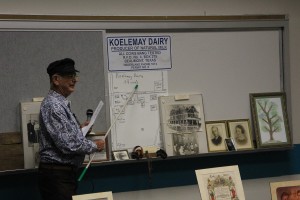
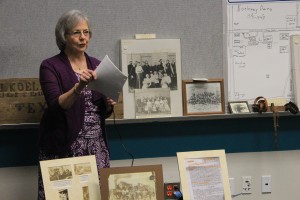


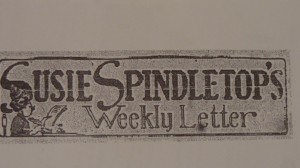
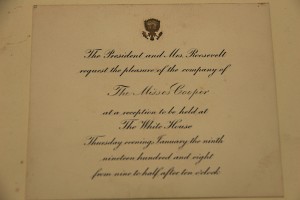
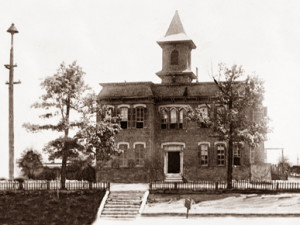
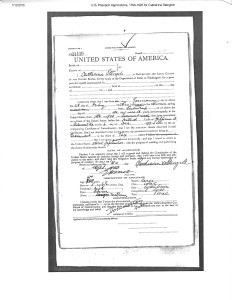
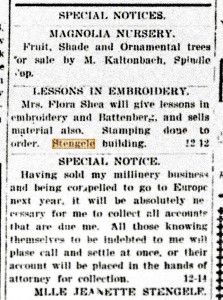

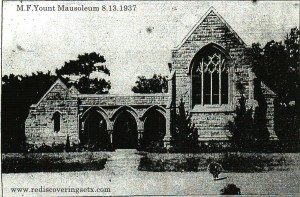
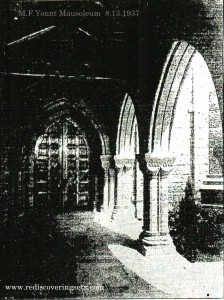
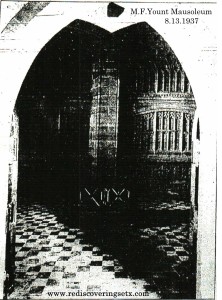
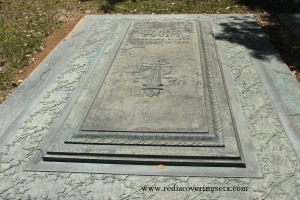
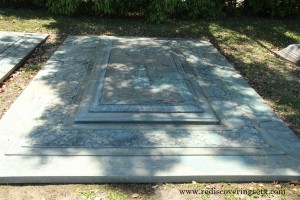


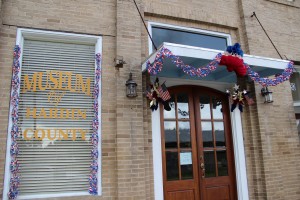
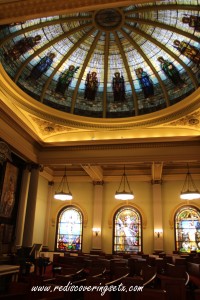
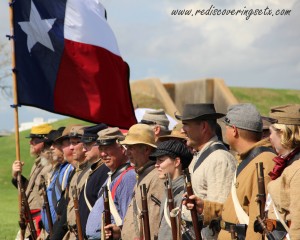
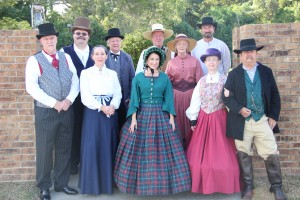
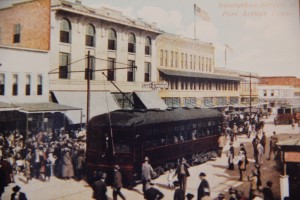
You must be logged in to post a comment.